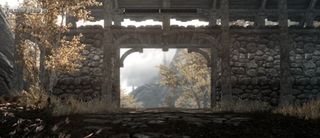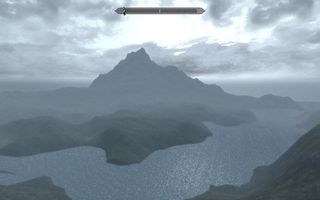Just how much of The Elder Scrolls' world of Tamriel is built into the code for Skyrim? All of it, it seems. Play the game long enough and you're bound to venture to the edge of the game's map – but rules are there to be broken, and console hacks are just a more advanced school of magic (just ask our pal Tyler Wilde). So what would happen if you were to, say, turn off the PC version's clipping and stab eastward? Oh, you'd only have all of Tamriel to explore.

Above: The furthest reaches of Skyrim, unless you know how to open the console
Finland's Jesse (via Game Informer) has posted a series of images recounting his adventures beyond the borders of Skyrim, showing the wide-open road past Stendarr's Beacon and into the province of Morrowind. “There are still trees and grass, despite no one being able to go here,” explains Jesse; “Gradually the foliage thins, and the textures become poor, but... there’s quite a long stretch between the gate and the texture fading.” Terrain remains beyond this point, enabling viewing of a rather sparse Vvardenfell and Red Mountain.

The game's terrain also includes recognizable recreations of signature areas from Oblivion, such as the island housing the Imperial City.

Above: The location of the Imperial City in Oblivion (left) and Skyrim (right)
So what's all this extra terrain doing in the game? The most obvious – and likely correct – answer is that it's simply for the purposes of ensuring there's always something to see on the horizon, or dimly-visible under the map's clouded regions. However, if you'd rather believe Bethesda's built whole other landmasses into the title to be populated with DLC content later down the line, we're certainly not going to stop you.
Maybe one day, you'll be free to wander a fully-populated Morrowind – where the Dragonborn returned centuries ago, but they called him the Nerevarine and he didn't need fast-travel to get the damn job done.
